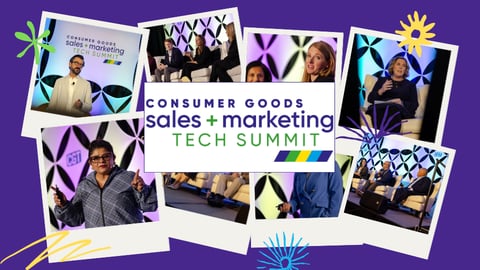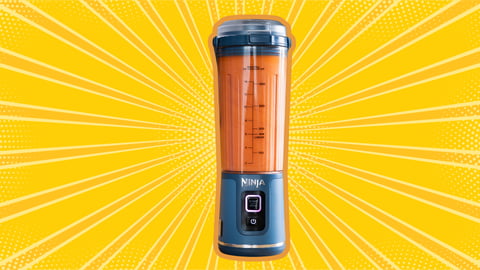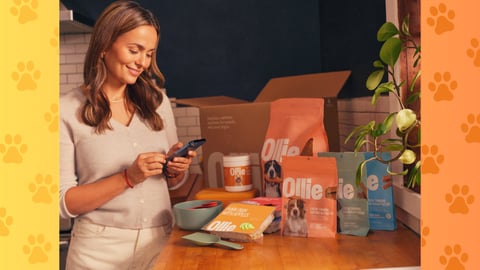Early and Often: How Loverboy Is Customizing CX
Calling yourself a premium brand leaves zero wiggle room for sub-par customer experiences — and such is life for Loverboy, the growing better-for-you alcohol brand that prides itself on both its inputs and its ability to foster deep consumer connections.
The digital native, which uses such ingredients as organic brewed tea, monk fruit, and juices and purées for its canned cocktails and spritzes, prioritizes its digital content creation and engagement efforts and counts more than 200,000 email subscribers in its coffers. Its accompanying apparel brand, meanwhile, brought in more than $1.3 million in revenue last year.
With DTC sales through its e-commerce site in 44 U.S. states, as well as nationwide through Kroger, Target, Total Wine, and Whole Foods, Loverboy has been busy readying new product innovations for the fall and firming up distribution expansion. And, like many CPGs, it’s also been forced to rethink operations as supply chain and labor stresses result in production and shipping delays.
Priding itself as a premium brand means every consumer touchpoint must feel that way, founder Kyle Cooke tells CGT. While working with third parties to produce, warehouse, and ship products means some factors remain beyond their control, that’s not a good answer for customer communication.
[See also: P&G’s Dittman Talks Data-Focused Strategies for Creating Brand-Obsessed Consumers]
The company partnered with operations experience management provider parcelLab at the beginning of 2022 to increase and customize order tracking and updates, as well as decrease the number of WISMO (“Where Is My Order”) emails it receives in its customer service inboxes.
“While these will never go away,” Cooke concedes, “by communicating early and often with our customers, reducing the amount we were previously receiving [helps] alleviate work of our small — but mighty — CX team.”
Loverboy also developed a customized and white-label experience at all customer touchpoints, including personalizing the tracking page and communications consumers receive during the post-purchase experience, in turn increasing the repurchase rate.
“Aside from order delays, we are a small team and want to make sure we get back to all of our customers both pre- and post-purchase,” says Cooke. “By increasing the number of consumer notifications on order status, this has allowed for fewer order-related emails, alleviating confusion on order tracking. Since we have a highly engaged consumer base, we don’t foresee these emails completely going away, but [this platform] will help to improve the customer experience post-purchase.”
[Related: How PacSun Stays On Script for Strong CX]
In addition to the parcelLab platform, Loverboy also simultaneously implemented a customer support platform, and the combination has resulted in order questions decreasing from the high hundreds to the lower hundreds. This improvement continues to be a work in progress for the company, notes Emily Bregman, director of growth and digital product at Loverboy, given today’s supply chain stressors causing some order delays, and it intends to add additional communication touchpoints.
“At the end of the day, we want to improve the overall experience of our customers and ensure that because they are spending a premium for our RTDs and merchandise, that it is getting to them,” says Cooke. “We have also been able to give our warehouse/logistics team real-time carrier updates that we were not previously receiving. This has allowed us to get ahead of delayed orders and hold carriers accountable.”
- Loverboy’s Personalization Tip Sheet
Loverboy founder Kyle Cooke shared some best practices for consumer goods companies seeking to level-up their personalization capabilities.
1. Since we have an engaged audience, we are constantly collecting feedback from our consumers and followers on how we can improve our processes. This is something that not only CPGs should be looking to do, but all businesses in general.
2. Add in moments along the customer journey that make your customers feel special. This can be by recommending additional products that complement what they have purchased in the past. For Loverboy, we are able to lean into a post-purchase communication from our founders after receiving their orders.
3. When it comes to subscription offerings, allow for your customers to have an easy way to manage their accounts. While interacting and talking to customer support is always there, empowering your customer to update their order (or even gift it) is something we have seen to our benefit.
4. Find moments to highlight your community. We dedicate emails and social posts to highlight our customers enjoying our products. While this may seem like Marketing 101, it allows your brand to stand out, and know that you’re not only looking at your user-generated content coming in, but shouting out followers and customers for sharing it.





